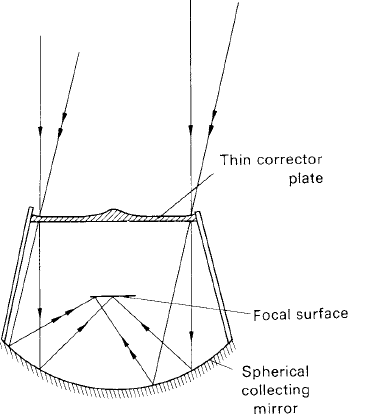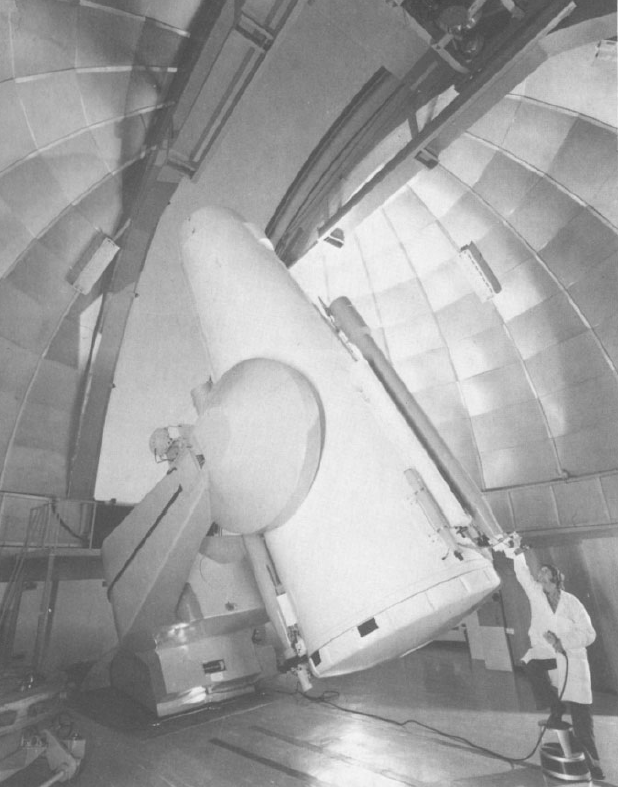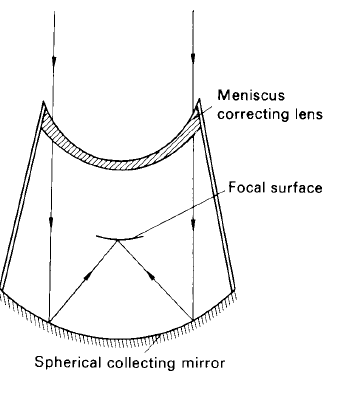
تاريخ الفيزياء

علماء الفيزياء


الفيزياء الكلاسيكية

الميكانيك

الديناميكا الحرارية


الكهربائية والمغناطيسية

الكهربائية

المغناطيسية

الكهرومغناطيسية


علم البصريات

تاريخ علم البصريات

الضوء

مواضيع عامة في علم البصريات

الصوت


الفيزياء الحديثة


النظرية النسبية

النظرية النسبية الخاصة

النظرية النسبية العامة

مواضيع عامة في النظرية النسبية

ميكانيكا الكم

الفيزياء الذرية

الفيزياء الجزيئية


الفيزياء النووية

مواضيع عامة في الفيزياء النووية

النشاط الاشعاعي


فيزياء الحالة الصلبة

الموصلات

أشباه الموصلات

العوازل

مواضيع عامة في الفيزياء الصلبة

فيزياء الجوامد


الليزر

أنواع الليزر

بعض تطبيقات الليزر

مواضيع عامة في الليزر


علم الفلك

تاريخ وعلماء علم الفلك

الثقوب السوداء


المجموعة الشمسية

الشمس

كوكب عطارد

كوكب الزهرة

كوكب الأرض

كوكب المريخ

كوكب المشتري

كوكب زحل

كوكب أورانوس

كوكب نبتون

كوكب بلوتو

القمر

كواكب ومواضيع اخرى

مواضيع عامة في علم الفلك

النجوم

البلازما

الألكترونيات

خواص المادة


الطاقة البديلة

الطاقة الشمسية

مواضيع عامة في الطاقة البديلة

المد والجزر

فيزياء الجسيمات


الفيزياء والعلوم الأخرى

الفيزياء الكيميائية

الفيزياء الرياضية

الفيزياء الحيوية

الفيزياء العامة


مواضيع عامة في الفيزياء

تجارب فيزيائية

مصطلحات وتعاريف فيزيائية

وحدات القياس الفيزيائية

طرائف الفيزياء

مواضيع اخرى
The Schmidt telescope
المؤلف:
A. Roy, D. Clarke
المصدر:
Astronomy - Principles and Practice 4th ed
الجزء والصفحة:
p 337
28-8-2020
2344
The Schmidt telescope
Improvements in wide-field photography over astrographic refractor systems were contemplated by considering the use of specially designed reflector cameras. The simplest system would consist of a single spherical mirror with an aperture stop at its centre of curvature. Such a camera has no unique axis and any point in the field would be imaged equally well—the focal surface would be curved, with a radius given by the focal length of the mirror.
When such simple camera systems are designed to have smaller focal ratios than those of the fastest astrographic refractors, the images suffered severely from spherical aberration. Many ways were suggested whereby this aberration might be reduced but it was not until the 1930s that a design was successfully manufactured by Schmidt in Hamburg. The system made by Schmidt was similar, in principle, to an optical device for a good quality parallel light source suggested and patented by Kellner some 20 years previously.
The Schmidt telescope is basically a two-element system, whereby the spherical aberration produced by the spherical collecting mirror is compensated by using a thin aspherical correcting lens or plate at the centre of curvature of the mirror. There is a range of shapes that the corrector lens can take. The basic parts are depicted in figure1 in which the departure of correcting lens from being a parallel plate is greatly exaggerated. It is usual practice to make no effort to correct for the curvature of the focal surface and specially produced photographic plates or film are required to match the curvature of the surface of best focus of the camera. Since the introduction of the basic design, improvements have been suggested and investigated which use more elements in the optical system but these will not be discussed here. Schmidt cameras can have focal ratios of f/1·0 or smaller and can provide field

Figure 1. A Schmidt telescope or camera.
coverage as wide as 25◦. They are primarily intended to be used as high-speed cameras rather than as conventional telescopes.
One of the obvious uses of Schmidt telescopes is to allow star surveys of large areas of the sky. Perhaps the most famous survey undertaken is that of The National Geographic Society—Palomar Observatory Sky Survey whereby 935 pairs of plates from the blue and red parts of the spectrum have been obtained covering the whole of the sky north of declination −33◦, each plate having a field diameter a little larger than 5◦. The Palomar Schmidt camera used in the survey has a corrector plate aperture of 1·25 m (the telescope is known as the 48-in Schmidt), a main mirror diameter of 1·83 m (72 in) and the system is used at f/2·44.
A complementary survey of the southern hemisphere skies involves the UK 1·2 m Schmidt telescope at Siding Spring ObservatoryW 20.6, Australia (see figure 2). With the newer emulsions now available, this survey records objects one magnitude fainter than the Palomar survey. The photographs are taken on 14 in square glass plates, each covering a wide field of 6·◦5. On each exposed plate, there may be a million images. The task of measuring their brightness and position is a colossal one and special scanning systems have been developed to extract the enormous quantity of information recorded on such plates.
The plates are stored at the Royal Observatory Edinburgh, UK, with high quality copies being made available to astronomers throughout the world. Together with other astronomical plates, they form an extremely valuable archive.
Another use of the Schmidt camera is for recording the positions of artificial Earth satellites. Although the basic Schmidt system provides good quality images, they are not perfect. It is obvious that some chromatic aberration is introduced by the correcting plate. The plate also only has a correct shape for removing spherical aberration for one particular wavelength and, thus, the residual spherical aberration is wavelength dependent. Coma is also present in the images away from the centre of the field.

Figure 2. The UK Schmidt telescope at Siding Spring, Australia. (By courtesy of the Science Research Council.)
A development, since the original design of the Schmidt telescope, is the Maksutov–Bouwers camera. In this design, the aspheric correcting lens is replaced by a negative long-focus meniscus lens with spherical surfaces. By the correct choice of the curvatures of the lens surfaces, the amount of spherical aberration produced by the lens can be made to match that of the collectingmirror but with the opposite sense. The single lens can also be designed to be achromatic, again by the correct choice of the radii of curvature of the lens surfaces in combination with the correct choice of lens thickness, thereby providing a lens–mirror combination which is free from chromatic aberration. Whereas each corrector plate of Schmidt telescopes needs individual figuring, the simplicity of using spherical surfaces in the corrector lens allows easier production of Maksutov–Bouwers cameras. A simple Maksutov–Bouwers camera is depicted in figure 3.

Figure 3. A Maksutov–Bouwers camera.

Figure 4. The transit telescope.
 الاكثر قراءة في مواضيع عامة في علم الفلك
الاكثر قراءة في مواضيع عامة في علم الفلك
 اخر الاخبار
اخر الاخبار
اخبار العتبة العباسية المقدسة

الآخبار الصحية















 قسم الشؤون الفكرية يصدر كتاباً يوثق تاريخ السدانة في العتبة العباسية المقدسة
قسم الشؤون الفكرية يصدر كتاباً يوثق تاريخ السدانة في العتبة العباسية المقدسة "المهمة".. إصدار قصصي يوثّق القصص الفائزة في مسابقة فتوى الدفاع المقدسة للقصة القصيرة
"المهمة".. إصدار قصصي يوثّق القصص الفائزة في مسابقة فتوى الدفاع المقدسة للقصة القصيرة (نوافذ).. إصدار أدبي يوثق القصص الفائزة في مسابقة الإمام العسكري (عليه السلام)
(نوافذ).. إصدار أدبي يوثق القصص الفائزة في مسابقة الإمام العسكري (عليه السلام)


















